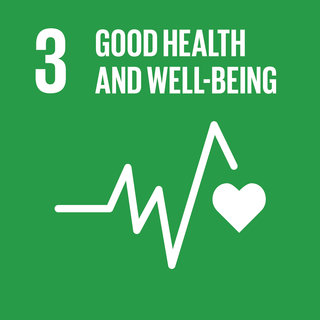
India's population in 2021 as per World Bank is 1.39 billion. Being the world's second-most-populous country and one of its fastest-growing economies, India experiences both challenges and opportunities in context of public health. India is a hub for pharmaceutical and biotechnology industries; world-class scientists, clinical trials and hospitals yet country faces daunting public health challenges like child undernutrition, high rates of neonatal and maternal mortality, growth in noncommunicable diseases, high rates of road traffic accidents and other health related issues.

Pakistan as a developing country is struggling in many domains due to which the health system has suffered a lot. As a result of that, Pakistan is ranked 122nd out of 190 countries in the World Health Organization performance report. Pakistan ranks 154th among 195 countries in terms of quality and accessibility of healthcare, according to a Lancet study. According to the study Pakistan has seen improvement in healthcare access and quality since 1990, with its HAQ index increasing from 26.8 in 1990 to 37.6 in 2016. Pakistan per capita income is 4,920 and the total expenditure on health per capita is $129, which is only 2.6% of GDP (2014). The gender inequality in Pakistan is 0.536 and ranks the country 147 out of 188 countries (2004). The total adult literacy rate in Pakistan is 55% (2014) and primary school enrolment is 73%. Life expectancy at birth is 68 years, Pakistan's population is around 185 million out of which more than 70 million people are living below the poverty line. The proportion of population which has access to improved drinking water and sanitation is 91% (2015) and 64% (15) respectively.

Tropical diseases, especially malaria and tuberculosis, have long been a public health problem in Kenya. In recent years, infection with the human immunodeficiency virus (HIV), which causes acquired immune deficiency syndrome (AIDS), also has become a severe problem. Estimates of the incidence of infection differ widely.
Sudan is still one of the largest countries in Africa even after the split of the Northern and Southern parts. It is one of the most densely populated countries in the region and is home to over 37.9 million people.

The Tajikistan health system is influenced by the former Soviet legacy. It is ranked as the poorest country within the WHO European region, including the lowest total health expenditure per capita. Tajikistan is ranked 129th as Human Development Index of 188 countries, with an Index of 0.627 in 2016. In 2016, the SDG Index value was 56. In Tajikistan health indicators such as infant and maternal mortality rates are among the highest of the former Soviet republics. In the post-Soviet era, life expectancy has decreased because of poor nutrition, polluted water supplies, and increased incidence of cholera, malaria, tuberculosis, and typhoid. Because the health care system has deteriorated badly and receives insufficient funding and because sanitation and water supply systems are in declining condition, Tajikistan has a high risk of epidemic disease.

Thailand has had "a long and successful history of health development," according to the World Health Organization. Life expectancy is averaged at seventy years. Non-communicable diseases form the major burden of morbidity and mortality, while infectious diseases including malaria and tuberculosis, as well as traffic accidents, are also important public health issues.

The major causes of deaths in Finland are cardiovascular diseases, malignant tumors, dementia and Alzheimer's disease, respiratory diseases, alcohol related diseases and accidental poisoning by alcohol. In 2010 the leading causes of death among men aged 15 to 64 were alcohol related deaths, ischaemic heart disease, accident, suicides, lung cancer and cerbrovascular diseases. Among women the leading causes were breast cancer, alcohol related deaths, accidents, suicides, ischaemic heart disease and lung cancer.

Niger is a landlocked country located in West Africa and has Libya, Chad, Nigeria, Benin, Mali, Burkina Faso, and Algeria as its neighboring countries. Niger was French territory that its independence in 1960 and its official language is French. Niger has an area of 1.267 million square kilometres, nevertheless, 80% of its land area spreads through the Sahara Desert.
The current population of Myanmar is 54.05 million. It was 27.27 million in 1970. The general state of healthcare in Myanmar is poor. The military government of 1962-2011 spent anywhere from 0.5% to 3% of the country's GDP on healthcare. Healthcare in Myanmar is consistently ranked among the lowest in the world. In 2015, in congruence with a new democratic government, a series of healthcare reforms were enacted. In 2017, the reformed government spent 5.2% of GDP on healthcare expenditures. Health indicators have begun to improve as spending continues to increase. Patients continue to pay the majority of healthcare costs out of pocket. Although, out of pocket costs were reduced from 85% to 62% from 2014 to 2015. They continue to drop annually. The global average of healthcare costs paid out of pocket is 32%. Both public and private hospitals are understaffed due to a national shortage of doctors and nurses. Public hospitals lack many of the basic facilities and equipment. WHO consistently ranks Myanmar among the worst nations in healthcare.
According to the World Bank income level classification, Portugal is considered to be a high income country. Its population was of 10,283,822 people, by 1 July 2019. WHO estimates that 21.7% of the population is 65 or more years of age (2018), a proportion that is higher than the estimates for the WHO European Region.

The Human Rights Measurement Initiative finds that Cameroon is fulfilling 61.0% of what it should be fulfilling for the right to health based on its level of income. When looking at the right to health with respect to children, Cameroon achieves 81.7% of what is expected based on its current income. In regards to the right to health amongst the adult population, the country achieves only 70.5% of what is expected based on the nation's level of income. Cameroon falls into the "very bad" category when evaluating the right to reproductive health because the nation is fulfilling only 30.9% of what the nation is expected to achieve based on the resources (income) it has available.

Health in Chad is suffering due to the country’s weak healthcare system. Access to medical services is very limited and the health system struggles with shortage of medical staff, medicines and equipment. In 2018, the UNHCR reported that Chad currently has 615,681 people of concern, including 446,091 refugees and asylum seekers. There is a physician density of 0.04 per 1,000 population and nurse and midwife density of 0.31 per 1,000 population. The life expectancy at birth for people born in Chad, is 53 years for men and 55 years for women (2016). In 2019 Chad ranked as 187 out of 189 countries on the human development index, which places the country as a low human development country.

The 2010 maternal mortality rate per 100,000 births for Tanzania was 790. This is compared with 449 in 2008 and 610.2 in 1990. The UN Child Mortality Report 2011 reports a decrease in under-five mortality from 155 per 1,000 live births in 1990 to 76 per 1,000 live births in 2010, and in neonatal mortality from 40 per 1,000 live births to 26 per 1,000 live births. The aim of the report The State of the World's Midwifery is to highlight ways in which the Millennium Development Goals can be achieved, particularly Goal 4 – Reduce child
Malawi ranks 170th out of 174 in the World Health Organization lifespan tables; 88% of the population live on less than £2.40 per day; and 50% are below the poverty line.

Lesotho's Human development index value for 2018 was 0.518 — which put the country in the low human development category — positioning it at 164 out of 189 countries and territories. Health care services in Lesotho are delivered primarily by the government and the Christian Health Association of Lesotho. Access to health services is difficult for many people, especially in rural areas. The country’s health system is challenged by the relentless increase of the burden of disease brought about by AIDS, and a lack of expertise and human resources. Serious emergencies are often referred to neighbouring South Africa. The largest contribution to mortality in Lesotho are communicable diseases, maternal, perinatal and nutritional conditions.
Zambia is a landlocked country in Sub Saharan Africa which experiences a burden of both communicable and non-communicable diseases. In line with WHO agenda for equity in health, it has adopted the Universal Health Coverage agenda to mitigate the challenges faced within the health sector. The Ministry of Health (MOH) provides information pertaining to Zambian health. The main focus of the Ministry of Health has been provision of uninterrupted care with emphasis on health systems strengthening and services via the primary health care approach.
Even though Panama has one of the fastest growing economies in the western hemisphere, this prosperity has still left behind an estimated 500,000 people who remain trapped in extreme poverty. The country have major socioeconomic and health inequalities between the country’s urban and rural populations, further, the indigenous population lives in more disadvantaged conditions and experiences greater vulnerability in health. In general, the population living in more marginalized areas has less service coverage and less access to health care.
Montenegro is a country with an area of 13,812 square kilometres and a population of 620,029, according to the 2011 census. The country is bordered by Croatia, the Adriatic Sea, Bosnia, Herzegovina, Serbia, Kosovo and Albania. The most common health issues faced are non-communicable diseases accounting for 95% of all deaths. This is followed by 4% of mortality due to injury, and 1% due to communicable, maternal, perinatal and nutritional conditions. Other health areas of interest are alcohol consumption, which is the most prevalent disease of addiction within Montenegro and smoking. Montenegro has one of the highest tobacco usage rates across Europe. Life expectancy for men is 74 years, and life expectancy for women is 79.

Life expectancy in Albania was estimated at 77.59 years, in 2014, ranking 51st in the world, and outperforming a number of European Union countries, such as Hungary, Poland and the Czech Republic. In 2016 it was 74 for men and 79 for women. The most common causes of death are circulatory diseases followed by cancerous illnesses. Demographic and Health Surveys completed a survey in April 2009, detailing various health statistics in Albania, including male circumcision, abortion and more.

Sustainable Development Goal 3, regarding "Good Health and Well-being", is one of the 17 Sustainable Development Goals established by the United Nations in 2015. The official wording is: "To ensure healthy lives and promote well-being for all at all ages." The targets of SDG 3 cover and focus on various aspects of healthy life and healthy lifestyle. Progress towards the targets is measured using twenty-one indicators.














